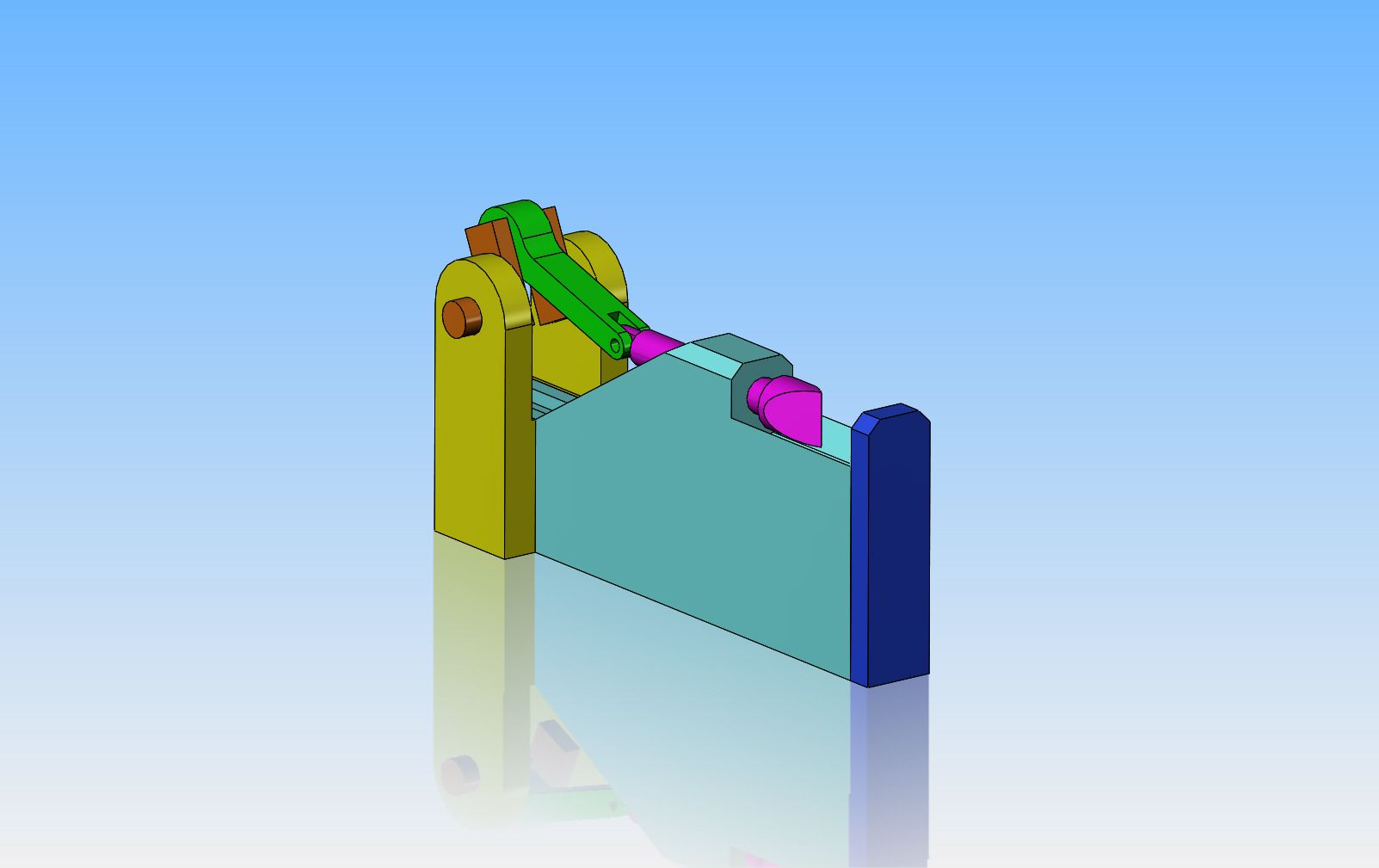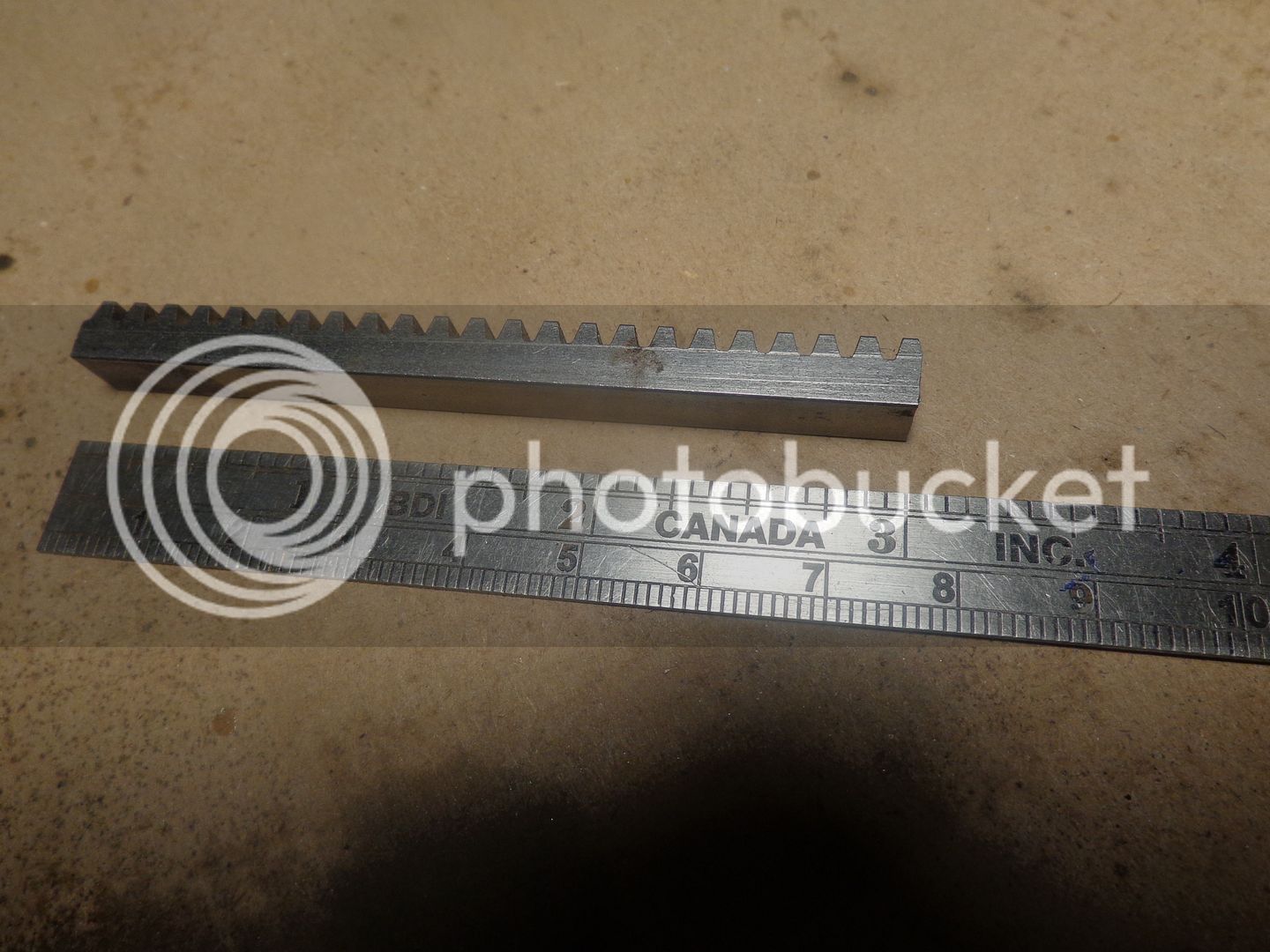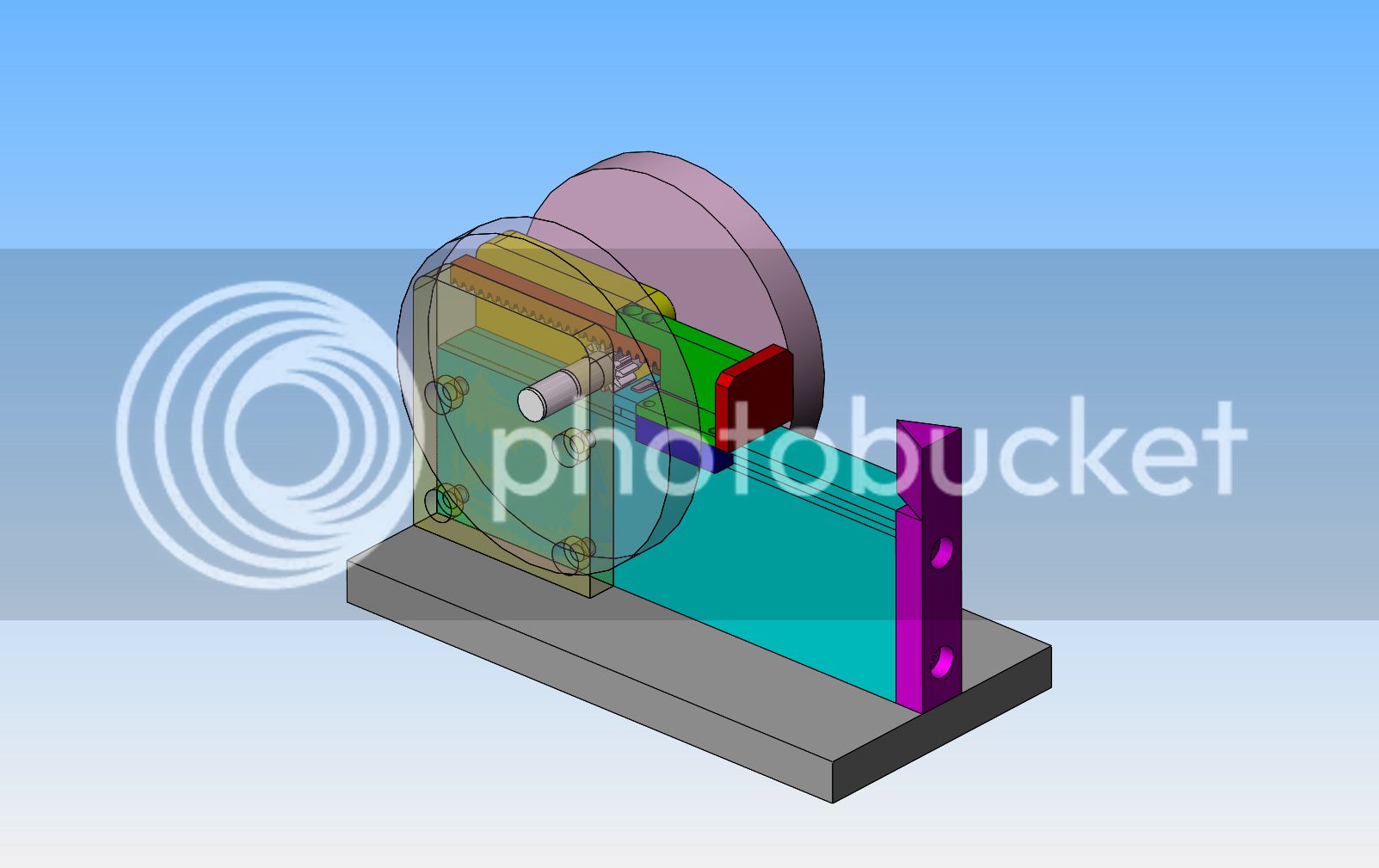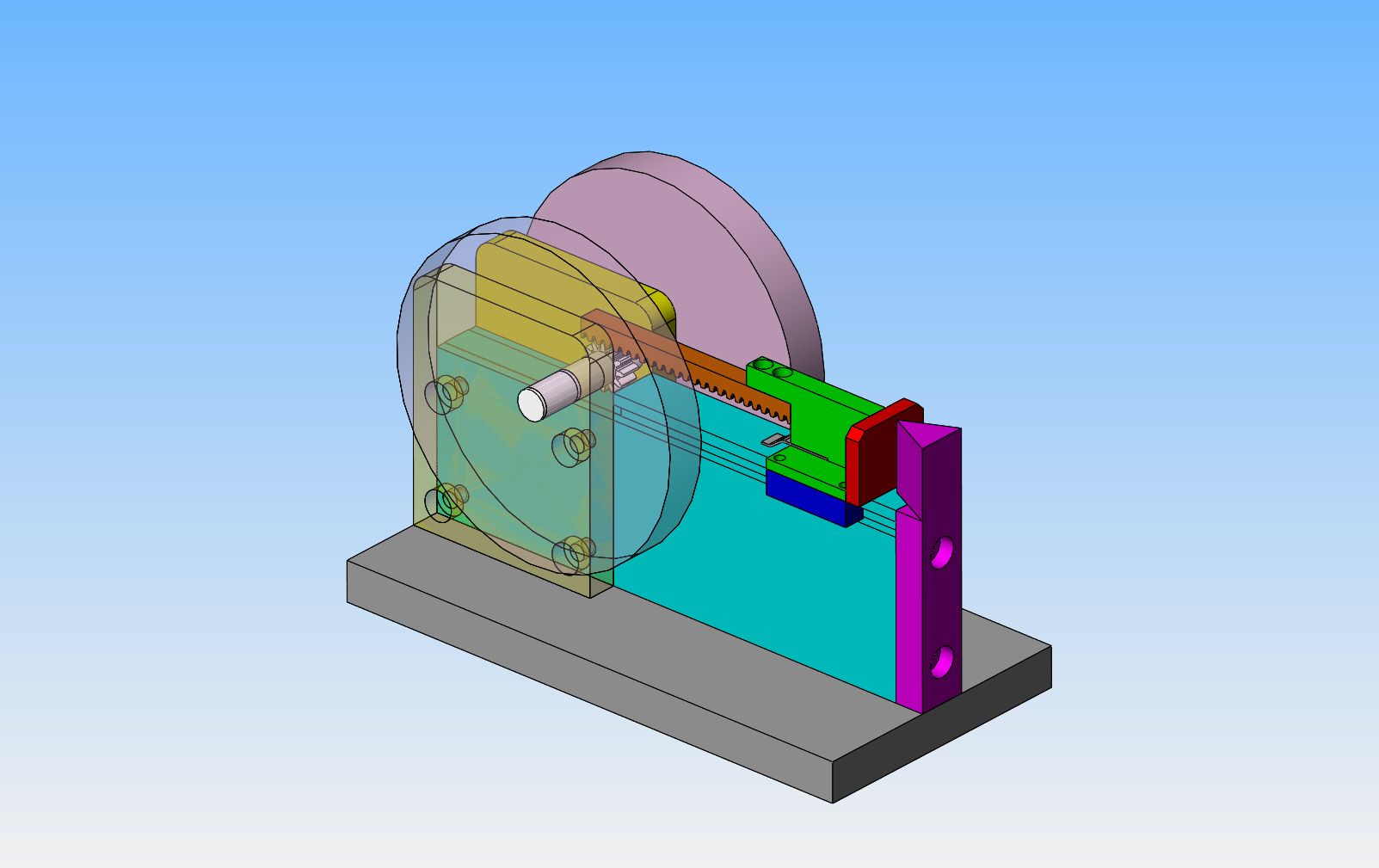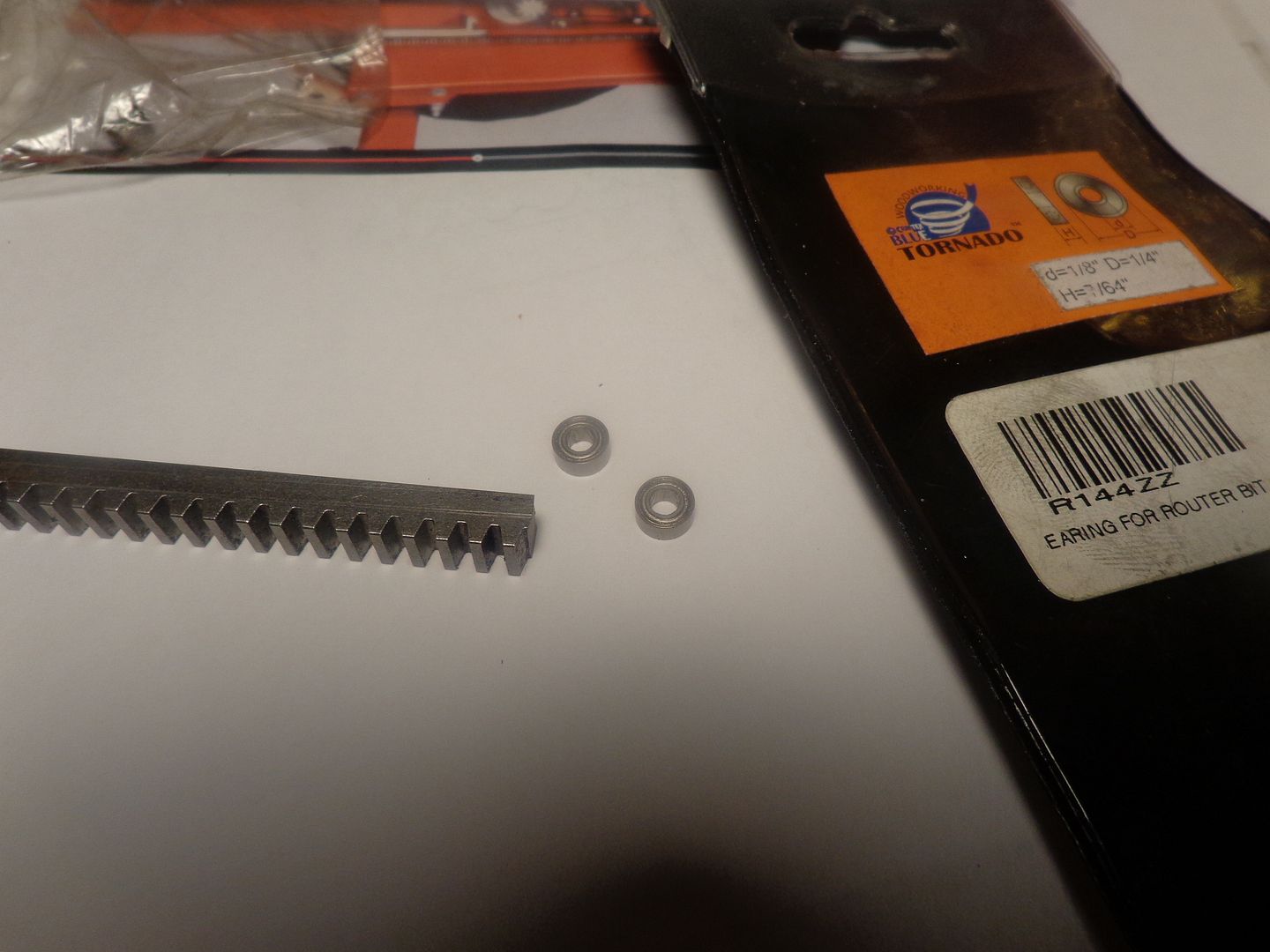As far as I am able to determine, no one has built a model wood splitter. A google search on wood splitters show two main types, either hydraulic (which are not suitable for a model, in my opinion), and electric screw type which might hold some promise. Then of course there is the cone shaped threaded splitter which bolts to a tractor wheel and screws itself into a block of wood, bursting it to split it, and the heavy revolving flywheel with an axe head mounted on it, which looks like a total suicide machine. I have seen one example of a steam driven wood splitter, which worked well, but I doubt that it would scale down very well.
Model engines simply don't have much torque. One of the primary things that a model woodsplitter would need would be a huge torque multiplier, and with torque multiplication, things slow down dramatically.
I have a couple of ideas floating around in my head, one involving a rack which is pushed forward incrementally by a sprag driven from an eccentric, and one which had a heavy flywheel with an eccentric on both sides driving "pusher arms".I want to split wooden logs 1 1/2" long, and prefer to split them in one full movement of the splitter, not incremental units.
Model engines simply don't have much torque. One of the primary things that a model woodsplitter would need would be a huge torque multiplier, and with torque multiplication, things slow down dramatically.
I have a couple of ideas floating around in my head, one involving a rack which is pushed forward incrementally by a sprag driven from an eccentric, and one which had a heavy flywheel with an eccentric on both sides driving "pusher arms".I want to split wooden logs 1 1/2" long, and prefer to split them in one full movement of the splitter, not incremental units.





